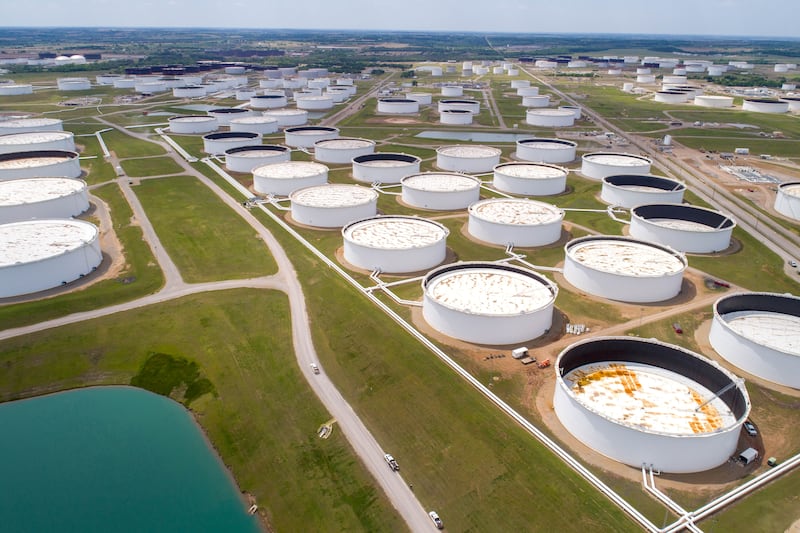Oil prices on Wednesday edged towards $80 per barrel as concerns about the Omicron coronavirus variant hitting demand eased.
Brent, the international benchmark, was up 0.3 per cent to $79.18 per barrel at 11.46am UAE time, while West Texas Intermediate, the gauge that tracks US crude, was trading 0.2 per cent higher at $76.13 per barrel.
“Oil prices have been rising over the past few days, mainly because of falling concerns regarding the severity of the Omicron variant and its impact on economies around the world,” said Naeem Aslam, chief market analyst at Ava Trade.
Omicron, which was first detected in South Africa last month, is not leading to severe infections despite a high number of cases, the official data shows. Hospital admissions in the US and other countries are lower when compared with earlier waves of the pandemic, according to the US Centres for Disease Control and Prevention data.
The US health officials also decided to shorten the recommended Covid-19 isolation quarantine period from 10 days to five days amid reduced fears of the new variant causing severe infection.
The new development “has pumped investors' optimism and led to the oil market recovering from the slump in prices seen around the time when news of the Omicron variant reached markets”, Mr Aslam said.
Production disruptions in Nigeria, Libya and Ecuador because of maintenance problems and the shutdown of oil fields are also supporting oil prices.
“Investor apprehensions surrounding Omicron are easing on growing evidence that the variant is milder in nature, potentially reducing the need to impose mobility restrictions and thus hampering demand,” said Ehsan Khoman, head of emerging markets research at MUFG Bank.
“Heading into 2022, our conviction remains firm for near-term moderation in oil prices with the pivot towards oversupply on both higher Opec+ and non-Opec+ supplies as well as a normalisation in the demand profile.”
However, the bank expects higher oil prices towards the end of 2022 and into 2023 due to underinvestment in the sector.
The total investment in the upstream sector (exploration and production of oil and gas) of the oil and gas sector fell 23 per cent below pre-coronavirus levels to $341 billion in 2021 while oil demand continued to rise globally, a report by the International Energy Forum and IHS Markit said earlier this month.
Investors are also awaiting an Opec+ meeting on January 4, at which the group will decide whether or not to go ahead with a planned production increase of 400,000 barrels per day in February. At its last meeting, Opec+ stuck to its plans to boost output for January despite Omicron fears.
Meanwhile, Saudi Arabia, Opec's biggest producer, plans to cut prices for the crude it sells to Asia after Middle East benchmarks and spot prices slumped this month due to higher production from Opec and its allies and oil releases from strategic reserves at top consumers, Reuters reported on Wednesday, citing industry sources.
The producer is expected to cut official selling prices (OSPs) of all grades by more than $1 in February from the previous month.







